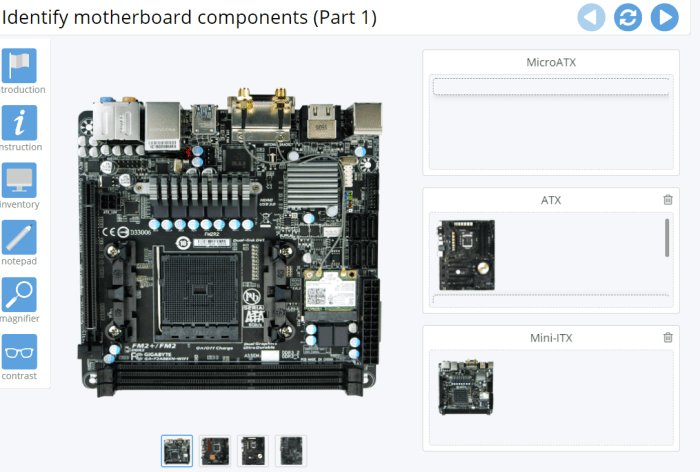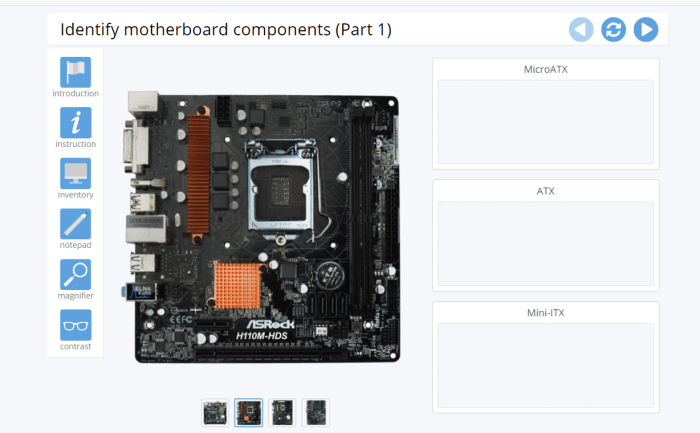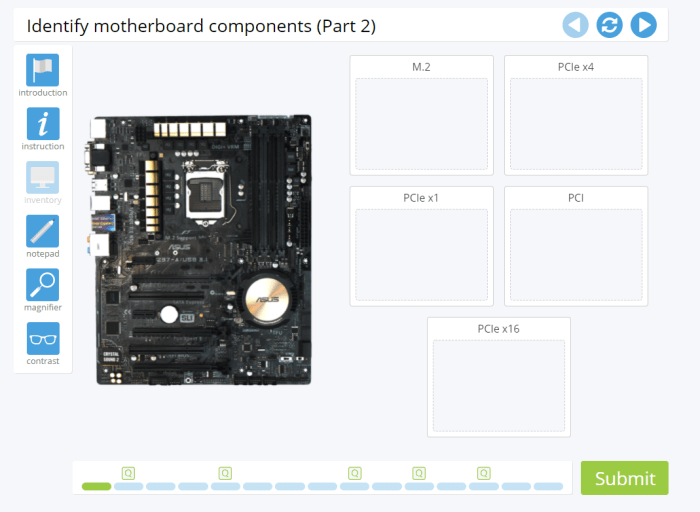Lab 2-3 practice mode identify motherboard components part 1 – Embark on a comprehensive exploration of motherboard components with Lab 2-3 Practice Mode, a captivating and interactive learning experience. This guide provides a comprehensive overview of motherboard architecture, equipping you with the knowledge to identify and understand each component’s function and location.
Through hands-on practice and detailed explanations, you will gain a deep understanding of the motherboard’s role as the central hub of a computer system. Discover the secrets behind the intricate network of components that orchestrate the seamless operation of your device.
1. Motherboard Components Identification

The motherboard is the central component of a computer system, connecting and coordinating all the other components. It provides the physical structure for the computer and houses the essential hardware components.
Motherboards come in various form factors, each with its own set of features and capabilities. The most common form factors include ATX, mATX, and mini-ITX.
1.1 Types of Motherboard Components, Lab 2-3 practice mode identify motherboard components part 1
- CPU Socket: Accommodates the central processing unit (CPU), the brain of the computer.
- RAM Slots: Hold random access memory (RAM) modules, which store temporary data and instructions.
- Expansion Slots: Allow for the installation of additional hardware components, such as graphics cards and sound cards.
- Storage Connectors: Connect storage devices, such as hard drives and solid-state drives (SSDs).
- Power Connectors: Supply power to the motherboard and its components.
- Input/Output (I/O) Ports: Provide connectivity for external devices, such as keyboards, mice, and printers.
- BIOS Chip: Stores the basic input/output system (BIOS), which initializes the hardware components and loads the operating system.
1.2 Location and Purpose of Each Component
The location and purpose of each motherboard component vary depending on the form factor. However, the general layout remains consistent.
The CPU socket is typically located in the center of the motherboard. RAM slots are usually found on either side of the CPU socket. Expansion slots are typically located along the bottom edge of the motherboard.
Storage connectors are typically located along the right edge of the motherboard. Power connectors are usually located in the upper right corner of the motherboard.
I/O ports are typically located on the back panel of the computer case. The BIOS chip is usually located near the CPU socket.
FAQs: Lab 2-3 Practice Mode Identify Motherboard Components Part 1
What is the purpose of Lab 2-3 Practice Mode?
Lab 2-3 Practice Mode is designed to provide an interactive and immersive learning experience, allowing users to identify motherboard components in a simulated environment.
What are the benefits of using Lab 2-3 Practice Mode?
Lab 2-3 Practice Mode offers several benefits, including hands-on practice, detailed explanations, and a deeper understanding of motherboard components and their functions.
Who is Lab 2-3 Practice Mode suitable for?
Lab 2-3 Practice Mode is suitable for anyone interested in learning about motherboard components, including aspiring technicians, computer enthusiasts, and students.


